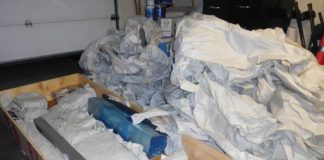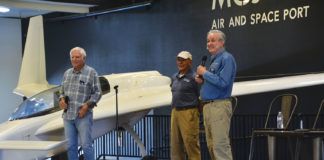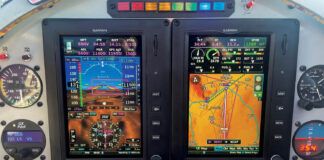I suppose it had to happen. Back in 2007, Glasair Aviation announced that it would consider doing Two Weeks to Taxi (TWTT) programs for the RV-7 and RV-10 aircraft. That idea never really gained traction amid an outbreak of new rulemaking by the FAA regarding Experimental/Amateur-Built aircraft. As you may recall, that bureaucratic skirmish was prompted by the visible flouting of the amateur-built rules by a certain manufacturer of a turboprop single. Its nose tweaked, the FAA returned fire with a wide-ranging proposal to put the amateurs back into the Experimental/Amateur-Built industry. After the first round, encompassing some frighteningly close restrictions, the rules were altered by the FAA in response to the industry and builders into something that’s proven workable for everyone.
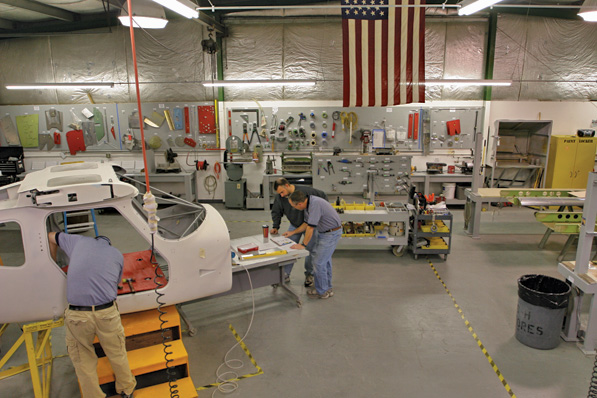
Glasair’s original Two Weeks to Taxi (TWTT) program eventually developed into a popular option for the Sportsman.
In fact, the FAA took steps to vet the TWTT program for the GlaStar Sportsman and found that the builders were doing a sufficient amount of work that they were not perjuring themselves while signing the final airworthiness documents. This is one of the oft-forgotten issues for those who have had airplanes mostly or completely built by someone else but insist on signing the papers that say they’ve built the majority of the aircraft. You’d think that simple enforcement of that rule would have been more time-effective than rebuilding the rules, but I digress.
For Glasair Aviation, the rulemaking brouhaha came just ahead of the worldwide fiscal meltdown of 2008. If ever there was a time to launch an even more expensive aircraft project, that was not it. Many outsiders figured the RV-7/10 TWTT program was dead and buried.
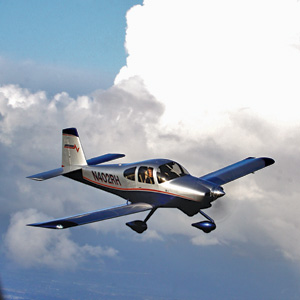
The completed Van’s RV-10 is a substantial, useful airplane. Is it a good candidate for rapid building?
Not Dead Yet
But then just before AirVenture this year, Advanced Flight’s Rob Hickman posted photos of an RV-10 under construction at the Glasair facility. The virtual switchboards lit up in backlash, as the denizens of the RV community, fairly traditional in nature, struck out against the idea and railed, in a general but strident way, that completing an RV-10 in two working weeks was so close to impossible that the program had to be cutting corners or wildly overstepping the builder’s required “majority” of the work.
Many of the comments came from those who have built or are building an RV-10. Now, as good an airplane as it is, this is not what you’d call a simple kit. Size is one factor. You won’t be lifting a wing with one hand or casually moving the fuselage around in your two-car garage. In photos, the RV-10 looks great, nicely proportioned; step up to it, and you’ll think it had been photographed next to giants. It has a lot of pieces and the added complication of a composite structure for the cabin roof, a strong departure for the RV series, one that has proven to be difficult for builders. Especially those who had built a previous RV model with no structural fiberglass. It seems singularly unsuited to a super-fast-build program.
I’m not surprised by the outcry, and neither is the company. Fact is, GlaStar and Sportsman builders created the same ruckus in early 2006 when the first TWTT machine rolled out. (Mine was actually the prototype, followed by another semi-prototype, but by No. 3 all the TWTT Sportsman aircraft were going to “real” customers.) Aside from accusations of pure work-for-hire, existing customers said there was no way to build the Sportsman in the time allotted. After all, it was (and is) listed as a 1500-hour build (with typical build times higher, sometimes much higher when peerless construction is involved) and, the builders said, there just weren’t enough hours in a day to do all the work. That’s true: Assuming a 10-hour work day, laboring each of the 14 available days and taking no breaks, that accounts for just 140 hours. Times two, assuming the legal limit of a second helper.
It’s a well-told story now, but the magic is in the setup, organization and refinement of the process, which strips away all the wasted effort, minimizes the number of times the aircraft is assembled and disassembled for various tasks, and makes the most of factory-built fixtures to turn what would normally be a 4-hour job into a 30-minute exercise. Create this kind of compression across dozens of systems and you’ve saved some real time. There is not, despite naysayers’ implications, a battalion of Glasair employees swarming the project from dawn to dusk.
Going Big
As of late August, Glasair Aviation had not decided whether it would press ahead with the TWTT RV-10. A dominating issue is cost. A nicely equipped RV-10 coming out of the program will be perilously close in price to a used, well-equipped, safe-bet Cirrus. (The Sportsman has the advantage of little competition at its price point, even as a TWTT machine.) What’s more, the company was still building the first as a ship using standard off-the-shelf Van’s raw components. Few of the hard fixtures had been developed, and the process itself—what to do when in the course of the build, for example—was still in the very early stages of development. From the time of the original customer TWTT Sportsman aircraft in the spring of 2006 until now, the company has chipped away at the labor hours so that customers now make the two-week deadline with ease. Doing so required a number of substantial changes to the kit to accommodate the TWTT program—benefits that all Sportsman builders receive—and several updates to the process. With each one, the company and its employees learned a little bit more until, at more than 175 aircraft completed, the program is well-oiled.
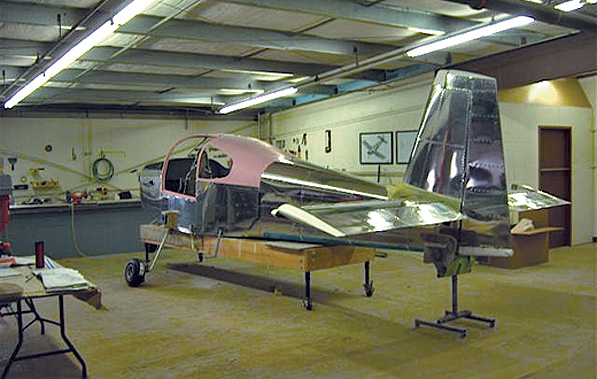
A “first article” RV-10 undergoes construction at the Glasair Aviation TWTT center.
It will be a much tougher road for the RV-10, I think. Partly due to the scale of the airplane, but also because Glasair Aviation doesn’t have the benefits of a closed-loop manufacturing process. Whatever changes would benefit the TWTT program aren’t likely to be made to the base kit—it wouldn’t benefit Van’s one bit and, in fact, would probably continue to anger the more traditional (and vocal) builders.
That’s actually a shame, because multiple benefits accrue from a program like TWTT. First is continuity. Each of the TWTT airplanes (with mine as probably the most notable exception) is more alike than different. Similarity provides the benefit of similar fleet experience—if a part fails on No. 34, there’s a good chance it’ll fail on No. 78, when you remove or minimize the builder variable—and improves the overall fleet safety average by eliminating the outliers. Homebuilt airplanes with unusual powerplants, builder-experimented aerodynamics or structure altered during construction are all subject to failure modes different from that of the built-by-the-plans fleet.
The second benefit is industry growth or, perhaps more accurately, a slowing of its contraction. By that I mean builders attracted to TWTT programs aren’t likely to tackle the job on their own. They’re definitely in it for the construction experience but lack the time, discipline or confidence to take a big project home and get it done alone. They don’t want a pure hired-gun deal, and they don’t quite know how to go about arranging legal builder assistance. For them, a program like TWTT meets right in the middle.
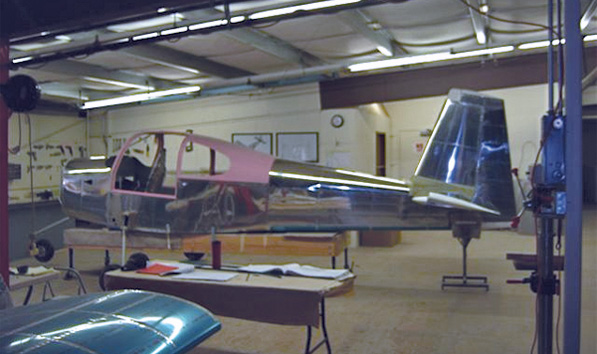
It’s not a done deal that Glasair Aviation will offer the RV-10 TWTT program. Overall costs and the health of the marketplace might rule against it.
A Matter of Philosophy
Many builders feel that the FAA’s acceptance (which is not to say endorsement) of the TWTT program dangerously erodes the concept of building for “education and recreation” that underpins the rules we build by. It may meet the letter of the law but slays the spirit stone cold dead. That can’t be good and, they apparently feel, invites further scrutiny by the Feds. I don’t disagree completely, though I think builders who strongly feel that way have not seen TWTT in action. Plus, flight safety is the bee currently in the FAA’s bonnet—not accounting for the build time.
Times change, and expectations evolve. The first truly complete aircraft kits were met with similar disdain, though it had to trickle up, builder-by-builder, a chapter meeting at a time in those pre-Internet days. In the reality of today’s lingering economic malaise, any additive sales have to be seen as a good thing. If a TWTT RV-10 sells even a handful more kits for Van’s, a few more screens for Advanced Flight, a few more engines for Lycoming, a few more props for Hartzell, that’s a good thing.
Whatever your personal beliefs, you have to acknowledge that it’s better to have these owners in our midst than out playing with expensive boats or a fleet of motorcycles. Besides, if you are personally dead set against accelerated programs like this one, you still have the freedom to build the old-fashioned way. Choice is good. Choice with a recovering industry behind it is better. Rhetoric gets us nowhere.

![]()
Marc Cook – Former KITPLANES® Editor-in-Chief Marc Cook has been in aviation journalism for 23 years and in magazine work for more than 25. He is a 4500-hour instrument-rated, multi-engine pilot with experience in nearly 150 types. He’s completed two kit aircraft, an Aero Designs Pulsar XP and a Glastar Sportsman 2+2.


